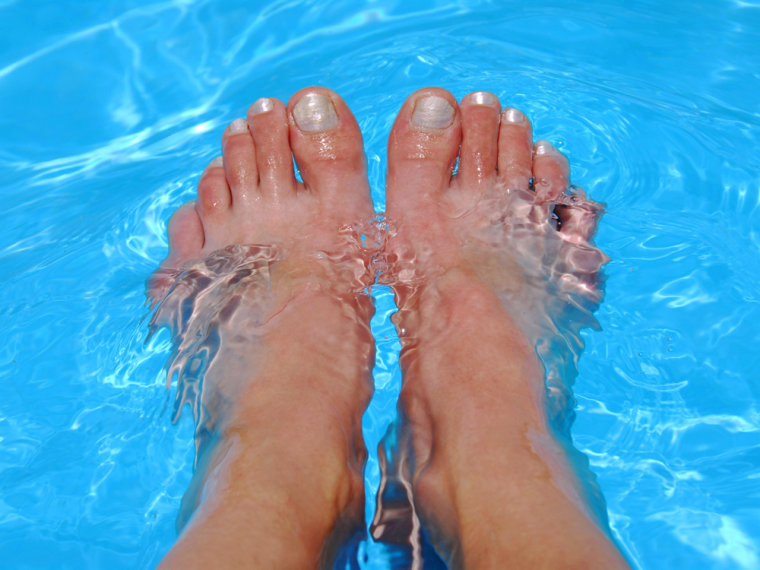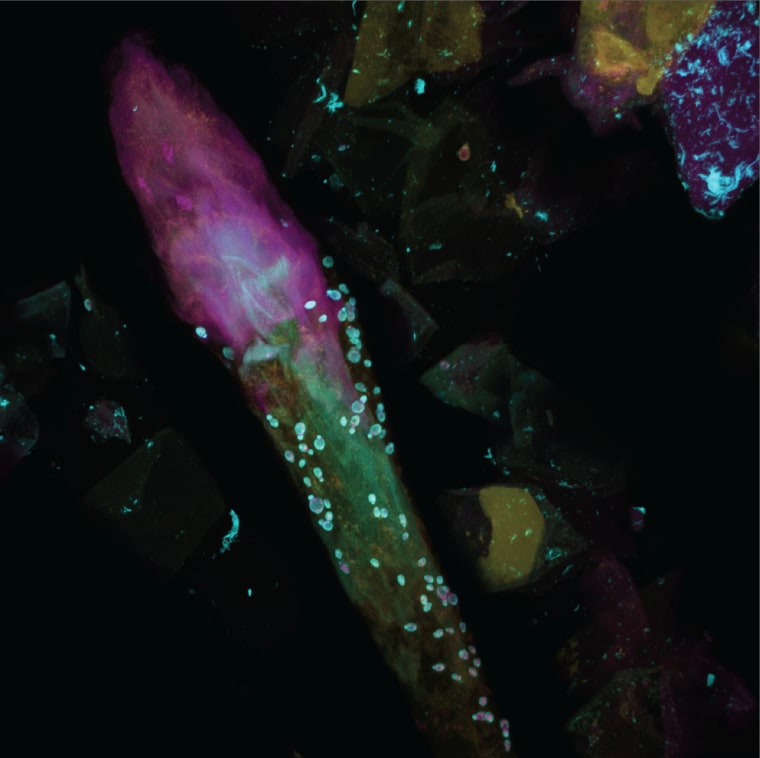
Government researchers have just done the first genetic survey of all the fungi that live on our skin. Their findings? They’re in your ears, they’re in your nose and, yes, they are in the goop between your toes.
Humans are covered with hundreds of different types of fungus, the team at the National Institutes of Health found. What’s surprising is that one family covers most of our bodies, but our feet are crawling with hundreds of different species of fungi, they report in the journal Nature.
"This is going to make me always wear flip flops in the locker room. When you see how many fungi can live on your feet, you realize … you are sharing your fungi with everyone who is walking around that locker room with you,” says Julie Segre, who led the team at the National Human Genome Research Institute.
They found DNA from fungi in the nostrils and on the ears, the scalp and the hands. But the feet are really covered with fungus -- something that may not surprise anyone who’s suffered through a bout of athlete’s foot.
The team found just one single genus of fungus, called Malassezia, dominates the head and trunk of the body. They found 11 different species of Malassezia, one of which causes dandruff.
"I was surprised that there was just one type of predominant fungus on your core body," Segre says.
But the feet? They’re fungus heaven.

Segre’s team sampled 10 health volunteers for their study, taking samples from 14 different spots.
Two of the volunteers looked like they may have had fungal infections – marked by scaly heels and thick toenails. Those two had similar-looking fungal communities on their feet, while the other eight had different fungi on theirs.
And the fungi don't just cause disease. "The fungi help to make your feet stinky," Segres says. "The odor is a byproduct of the microorganisms, the bacteria and the fungi."
Besides Malassezia, the researchers found Penicillium -- the mold that penicillin comes from -- Saccharomyces, the yeast used in making bread and beer, and Aspergillus, among others, on the feet of their volunteers. Species that live in between the toes are different from the species found on the heels. In all, there were 80 different genera of fungi on the feet, Segre’s team reports.
Antifungal creams aim to remove pathogenic fungi but Segres said it's futile and undesirable to try to get rid of all the fungi. "Even when you really scrub your skin you are not removing all the bacteria and fungi," she said. Good fungi, just like good bacteria, help keep the skin healthy, she said.
"We have to start thinking about our bodies as ecosystems," Segres said in a telephone interview. "Just as many of the foot powders will cause your feet to be less sweaty, when you put on moisturizer you are fertilizing the fungal microorganism garden."
Why are the feet so hospitable to fungi? "I think it's temperature," Segres said. Feet can be as much as 15 degrees cooler than the rest of the body. "Because your feet can be sometimes hot, sometimes cold, there can be different fungi," she said.
Related: